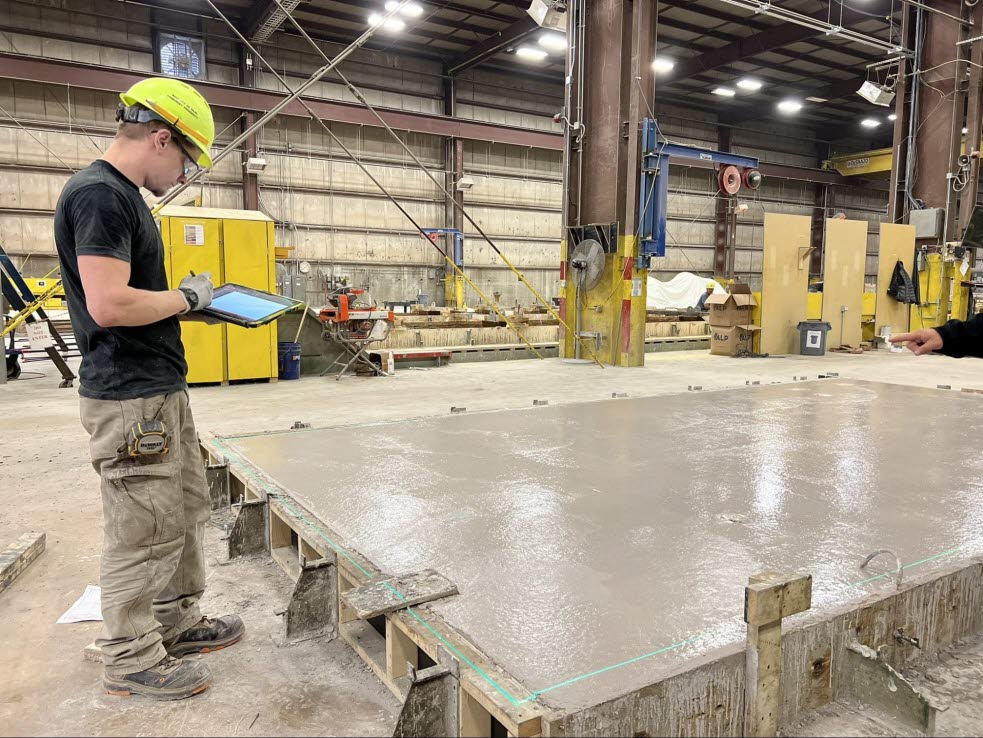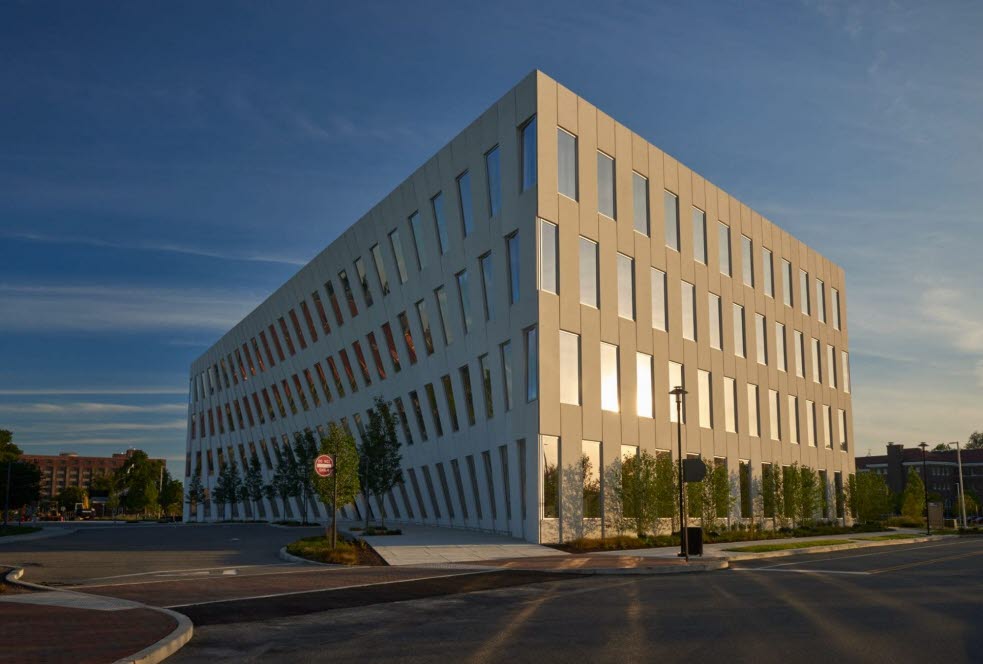Is Precast Concrete Sustainable?

Ways Precast Concrete Builds for a Better Future.
Sustainability and creating a healthy environment for future generations are important factors that many organizations consider before investing in their next project. Initiatives have been taken to use green building materials and create structures that benefit companies as well as the environment and surrounding communities.
As you look ahead to designing and building your next structure, you might want to consider using precast concrete. You may also ask yourself, "is precast concrete sustainable?" And the short answer is yes.
In this blog, we’ll tell you how the production and design of precast concrete make it a sustainable construction material.
What is Sustainability?
When you think of sustainability, the first thing that may come to mind is the environment or zero carbon emissions. Although this is a portion of sustainability, four pillars make up sustainable efforts: environmental, social, human, and economic.
With each pillar, the goal is to meet the needs of the current population without risking future generations. Precast concrete is one of the more sustainable materials for construction, and this type of building solution provides benefits in three of the four pillars.
Environmental
Environmental sustainability helps protect land, air, water, and minerals. When planning for environmental sustainability, your project should use resources efficiently while considering durability for the longevity of the structure’s lifespan.
In all types of construction, there is a water-cement ratio that affects concrete’s durability and strength. A lower water-cement ratio not only conserves water but makes the structure more durable. With precast concrete more durable than comparable cast-in-place or tilt-up concrete, precast concrete inherently maintains a lower water to cement ratio.
Concrete is also a very common building material made of sand, gravel, cement, and water, that can be found almost anywhere. With this combination of materials, precast concrete will not rust or rot over time. Whereas other building materials such as mass timber, steel, or aluminum will degrade with the presence of moisture.
Since these materials are all sourced locally, transportation efforts produce low emissions and support precast concrete being an energy-efficient building material.
Social
The number one priority of social sustainability is to protect the people that make up societies and communities. Precast concrete may not be the first thing to come to mind when you think about social sustainability, but the unique benefits of this green building material contribute to this pillar.
The manufacturing process of precast concrete does not release toxins or gasses that can potentially harm workers or the surrounding areas. The environment for construction workers producing precast concrete is also safer as this type of building material creates less dust than others.
Once the building is constructed, precast concrete offers more protection from storms and high winds. Additionally, the buildings are fire resistant and can better isolate a fire, so people working and living inside precast concrete buildings are safer.
Economic
Economic sustainability encompasses improving the standard of living and supporting long-term economic growth while preserving the other pillars of sustainability.
For a lot of organizations, this involves investing in durable, sustainable materials and high-quality initiatives that will not only benefit them internally but also the surrounding environment.
Precast concrete panels offer a longer service life and have the ability to be adapted or moved. When you’re looking to expand a current structure, precast concrete allows you to do so without the hassle of starting from scratch.
Since construction occurs off-site, a majority of precast concrete company employees are centered around a single location. In comparison, construction sites have sites more scattered throughout and employees transfer to different locations daily.
Precast concrete companies are able to contribute greatly to their local economies with stable positions and revenue going back into the community. High Concrete Group specifically works under the High Foundation, which works to improve and provide economic investment and employment in Lancaster County.

How is Precast Concrete Sustainable?
To be sustainable, a product must be able to maintain a certain level of performance for an extended period. This must be achieved without compromising future resources, societies, and generations.
The process and manufacturing of precast concrete provide multiple sustainable efforts. These practices not only benefit communities and the environment but your organization as well. You can expect to save money, time, and material with a precast concrete structure.
Thermal Benefits
The construction of a new building entails a whole list of components, but an important one is the building envelope or the shell of the building. Because of precast concrete’s density, this energy-efficient building material can absorb or store large amounts of heat.
A proper building envelope ensures cool or warm air will stay within the building, and ultimately create a more energy-efficient structure. This component is especially significant in areas where temperatures can drastically change between day and night.
Precast concrete can be designed with full insulation and wythe connectors between interior and exterior walls that provide a heat or moisture barrier so thermal energy is not lost. The thermal performance not only contributes to sustainability but makes the interior building temperature more comfortable.
The production process of precast concrete allows for different color options which can also affect how light reflects off the surface of your structure. Typically, lighter-colored structures create a higher albedo, or the ability to cause light to reflect rather than absorb into your building.
Efficiency
We’ve already discussed the thermal benefits of precast concrete, but what does that mean for long-term efficiency within your company?
Continuous insulation within precast concrete panels will save you money on HVAC systems. The thermal benefits of precast concrete influences your building structure to be cost-efficient as you reduce heating and cooling costs by 25%, making precast concrete very energy-efficient building material.
Typically, the construction of a new building takes place outside and on-site. This can result in increased amounts of waste or other inefficiencies. A controlled environment means better supervision and reduction in waste on your project.
Since precast concrete is manufactured inside, production can happen any time in the year. Efficient production means deadlines are met well in advance, so your structure is ready to use sooner.
Supervised manufacturing also means consistency throughout production. Every member of the construction team has a specific and specialized job. So, precast concrete panels can be more consistent in temperature and water-cement ratios.
The design process of precast concrete uses fewer materials since panels can measure over 60 ft when necessary. With these larger panels, you also eliminate columns within your space which allows for a more open floor plan.
Recycle & Reuse
Precast concrete components can be rearranged or disassembled to allow for structure additions. This becomes a sustainable practice because you’re not starting from scratch, so there are fewer materials and energy involved when you’re ready to expand.
Downcycling, or breaking down materials to use again in a limited way, is common within the precast concrete industry. For example, a concrete structure may be broken down and reused within a new aggregate or sub-base.
At a precast concrete facility, 95% of the waste that is made is then reused to manufacture new panels. Materials that would typically go into a landfill, like fly ash, slag, and silica fume, can instead go into the precast concrete as supplementary matter. Recycled steel is commonly used to reinforce and insulate precast concrete as well.
LEED Rating System
The Leadership in Energy and Environmental Design (LEED) rating system ranks buildings based on their efficiency, specifically in how the building saves money, lowers carbon emissions, and overall creates a more green environment.
There are 4 levels of the LEED certifications:
- Certified, 40 - 49 points
- Silver, 50 - 59 points
- Gold, 60 - 79 points
- Platinum, 80+ points
Precast concrete checks off multiple criteria within LEED that make the building qualify for various levels of certification. Some of those criteria include:
- Reduces heat-island effect (when precast concrete is a light color)
- Uses recycled materials, like concrete and steel
- Improves thermal and energy efficiency
- Keeps other materials out of a landfill
Sustainable Structures in Use
We may have answered, is precast concrete sustainable? But we’d like to take it one step further. Highlighted below are a few projects High Concrete is proud to be a part of as they help us move towards a greener future.

1200 Intrepid
This unique-shaped building was made using local and recycled materials that helped minimize emissions. This structure was awarded the LEED Gold certification because it is 30% more efficient than the ASHRAE baseline.
5th and Race St. Building
There is the possibility to have a precast concrete panel be the interior and exterior of your structure. Because of the thermal and moisture barrier within the connectors, less material is used and temperatures are controlled within the building.
Reading K-12 School
The Reading Community School was three individual schools until they were combined into one larger building. The precast panels were able to support multiple levels of the building, so they could use less material and save costs during the production process. They also needed a durable material that would serve as a community shelter during bad storms.
Meet your sustainability goals on your next school, hospital, or data center project.

